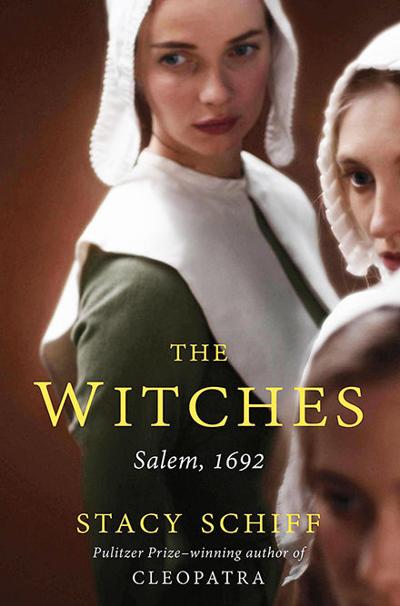Review by Brit McGinnis
The narrative pushed by history buffs about the Salem Witch Trials is that the victims of this hysterical part of American history were wise women who had rare knowledge. But the truth is much more complicated.
In her book, The Witches, author Stacy Schiff challenges us to think past our own biases and see to the true historical heart of the Salem Witch Trials. Through incredibly detailed and research-informed writing (that allegedly required eight research assistants), Schiff paints a portrait of an incredibly complicated time in history full of extreme stress. In learning about this time period, we can think more critically about our own society and how it reacts to extreme turmoil.
But we can only guess. Fourteen women, five men, and two dogs were killed for the offense of witchcraft. We still don’t know why it happened. Modern attitudes about history may paint the Puritans as crazy. But Schiff is here to challenge everything we know about the people who accused – and died being known as – witches.
A Fuller Picture
As Schiff points out, modern people have a certain view of the past that does not reflect what actually happened. Yes, the people who underwent the Salem Witch Trials were straight-laced Puritans who thought the devil could be found everywhere. But they also insisted that their children learn to read, to the point of socially shaming their neighbors who didn’t teach their children.
As Schiff explains in a chronological telling of this period in history, the accusations of witchcraft also didn’t come out of nowhere. Both the town and the village called Salem were broke, barely surviving but feeling pressure to care for increasing numbers of settlers (especially war widows). England-appointed governors were overthrown by local officials who cared little more for the people. With all the historical content she gives, it’s easier to see how an entire community snapped.
The Meaning of the Witch
In this period of history, people saw witches as people of any gender that could perform wondrous feats of magic due to a pact with the devil. With New England witches in particular, this ranged from flying through the air to coming out dry from walking on a wet road. Schiff suggests that more than anything, a witch was someone perceived as knowing more than everyone else around her. Witches admitted when they were tired or unsatisfied, taboo in a Puritan culture where idle hands were the tool of evil. Witches allegedly “sold their souls” for time to help with chores, travel, and nice shoes.
Schiff’s writing style can definitely be described as dense. The Witches is not an easy read, and all the names and concepts can at times become confusing. But it’s in these overarching concepts that her research-based writing shines. She widens our view of the world and humanizes the highly religious Puritans to people existing in a society as relatable as our own.
Complicated Victims (and Villains)
Schiff doesn’t paint the accused witches or the accusers as helpless. Her work to portray the people involved in this story as complicated reveals just how much more relatable the Puritans are than they have been portrayed in film and art. The accused slave Tituba was not a wicked voodoo sorceress in reality, but a cornered Indian woman who knew how to play the game in a devout society. One executed witch was a known thief. More than a few were objectively shady individuals who were disliked in the community for valid reasons. Parents likely nudged their daughters into accusing family enemies.
Schiff injects personality and human elements into a story, from a previous century, which truly makes this book worth reading. The themes of societal stress and how people express it continue to be relevant today. The book shines brightest when we understand the Puritans, stirring their porridge, looking over their shoulders and hoping they won’t see a man with a black hat and a book of names written in blood.

Brit McGinnis is an author and editor from Portland, OR. She writes on Medium, The Salve, and covers weird news for The Stacker. She was named a Hero of Haddonfield by the filmmakers behind Tales of Halloween in 2014.


A community that “snapped” is an idea that resonates in a post-Jan. 6th world. Also, seeing how a highly-religious group (in Salem, the Puritans) finds a way to lay blame is an idea that relates to today, as science is shoved aside, and blame is put on women for seeking healthcare in this post-Roe generation. Just typing the words, “post-Roe,” brings visions of suffering, blame, heartache.